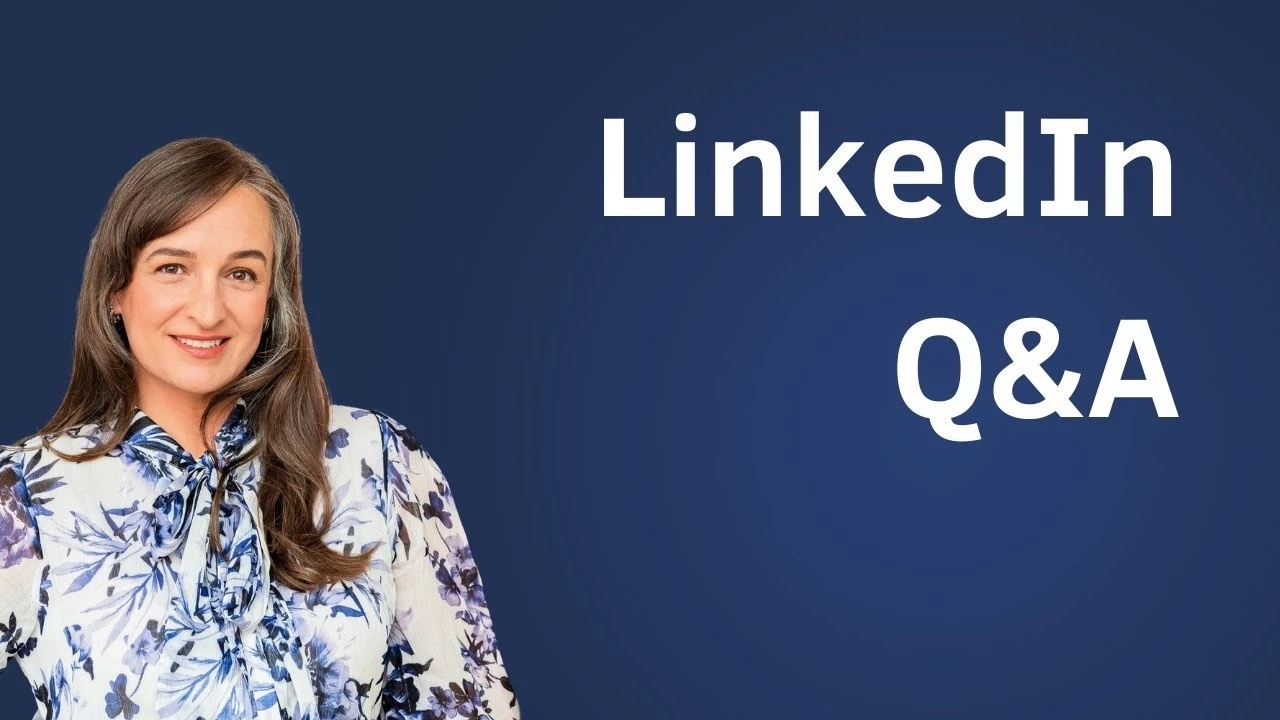Episode 46 - Have a LinkedIn Presence That’s Punchy and Interesting

In August 2020, I delivered a presentation for over 100 senior executives on using LinkedIn more efficiently. The goal was to give these busy corporate leaders a set of ideas and tools to spend a minimal amount of time on the platform and still have a LinkedIn presence that's punchy and interesting. So if that is you - that is if you also want to have that visibility, but you don't want, or don't have the time, to spend a lot of time on LinkedIn - Then this podcast episode is for you.
The idea is to maximize opportunities and visibility: your LinkedIn profile and activity should position you to be perceived professionally in the job market. This should be the ultimate goal.
The organizers received more questions that day than we had the time to answer. So I'm using this podcast episode to address all the questions that we received and answer them to the best of my ability, considering I'm not a big fan of the "one size fits all approach" and believe we should all be looking at finding what is distinctive about our capabilities and skills, and not copy what everyone else is doing on LinkedIn.
If you are relatively new to LinkedIn, I would recommend that you start our LinkedIn journey together by first listening to The Job Hunting Podcast Episode No. 34: How to make your LinkedIn profile stand out in 2020. Then come back to this episode and listen to the LinkedIn Q&A. However, if you are familiar with LinkedIn and an active user of the platform, you can go ahead and listen to the Q&A, no problem!
I also recommend that you download my LinkedIn Checklist, it will help you get started on LinkedIn or do a quick review on your profile.
I'd also love to hear your feedback and opinions. As I mentioned above, I'm not a big fan of the 'one size fits all approach to LinkedIn", so I'd love to hear what has been working for you on LinkedIn. When I'm doing LinkedIn Audits or working one-on-one with my coaching clients, I can tailor my recommendations to suit their needs. I love doing this; it's inspiring to position professionals for success. And I see it works for them!
And if you are listening to this episode a few months down the track, a few things may likely have changed on the platform. So keep that in mind, be wise, and adapt to make sure you are on top of the new trends and tools on LinkedIn. If you want my advice ongoing, join my The Job Hunting Podcast Private Group on Facebook and ask me a question here. That's where I hang out the most and do my Live Coaching Sessions regularly.
Resources mentioned in this episode
Timestamps to guide your listening (LinkedIn questions answered)
Transcript of this episode
About the Host
Hello, I’m Renata Bernarde, the Host of The Job Hunting Podcast. I’m also an executive coach, job hunting expert, and career strategist. I teach professionals (corporate, non-profit, and public) the steps and frameworks to help them find great jobs, change, and advance their careers with confidence and less stress.
If you are an ambitious professional who is keen to develop a robust career plan, if you are looking to find your next job or promotion, or if you want to keep a finger on the pulse of the job market so that when you are ready, and an opportunity arises, you can hit the ground running, then this podcast is for you.
In addition to The Job Hunting Podcast, on my website, I have developed a range of courses and services for professionals in career or job transition. And, of course, I also coach private clients.
Contact Renata Bernarde
I’m determined to help you! I want you to feel empowered, nail your next job, and have the career you want.
My free resources for job hunters: The Optimized Job Search: Weekly Schedule & Masterclass.
Learn more about my services, courses, and group coaching: RenataBernarde.com
